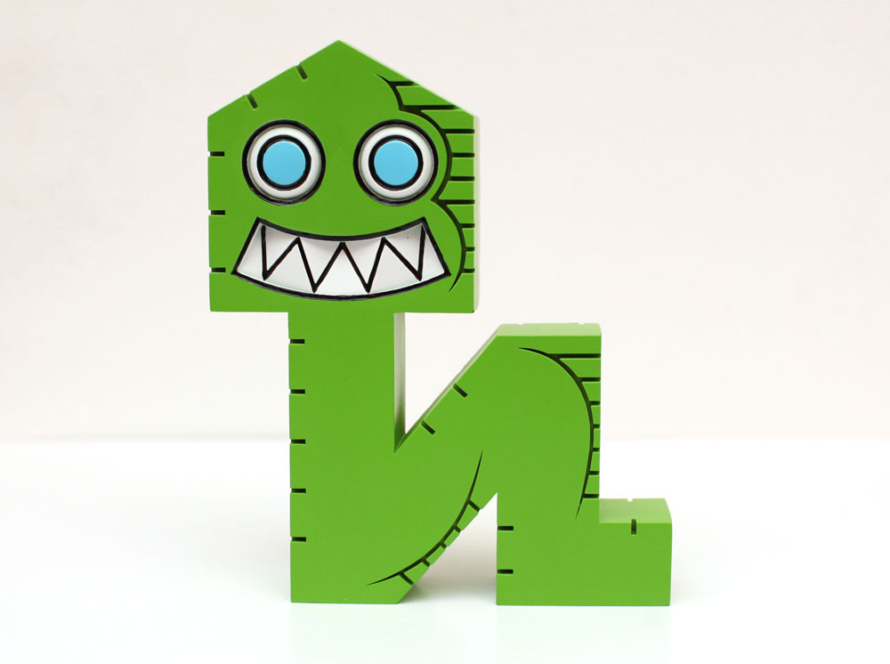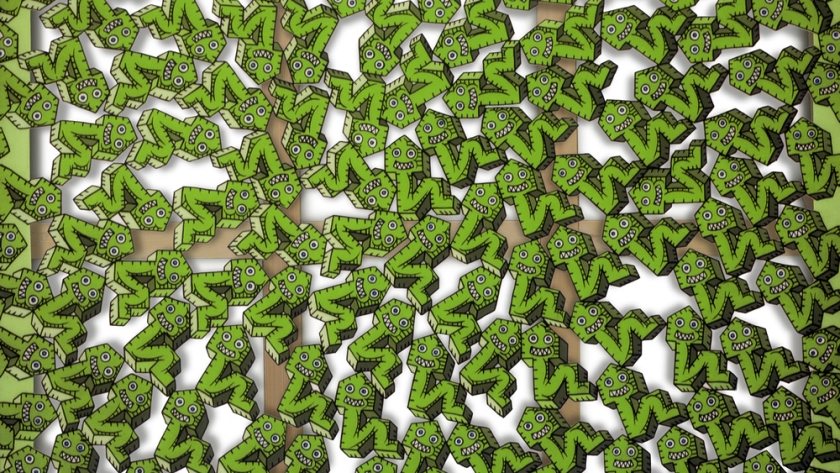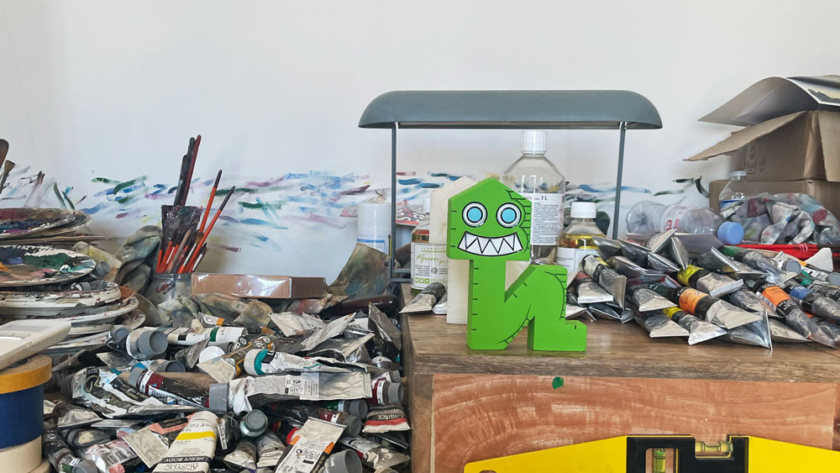
To the painting, I am what Vivienne Westwood is to the fashion : punk
Kriki
The art critic Jean-Luc Chalumeau, author of numerous works on contemporary art, writes a preface to Kriki’s monograph: “Founder of the group of visual artists Nuklé-Art in 1984, and the electro-punk music group Les Envahisseurs, Kriki still embodies punk culture in contemporary French art. From 1984, the stencil in the street will be his art school, as well as in the subway and his advertising poster hacks. As a result, he participated in the founding and the blossoming of what is known today as Street Art. Immersed in alternative culture, his youthful avant-gardism will immediately place him at the top of the emerging artists to follow both by the art galleries and on the art market.”
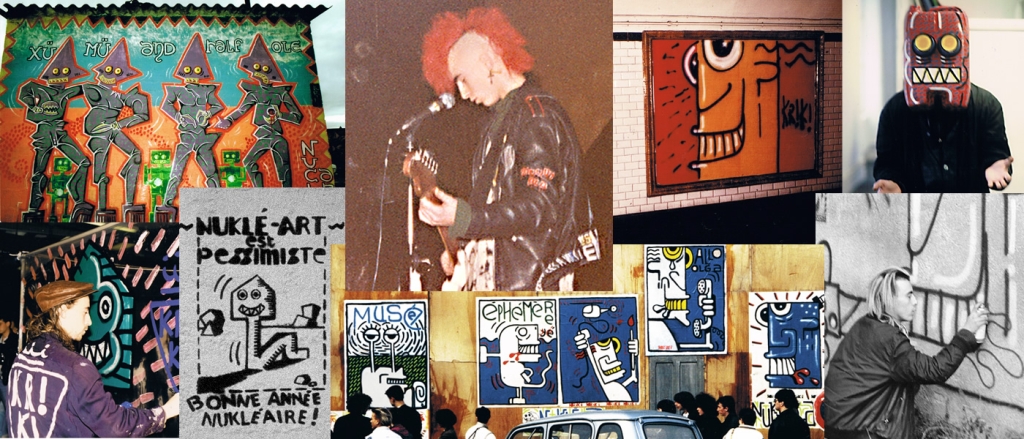
From his beginnings, Kriki covered the palisades and walls of the capital with the famous stencil “Hello Olga, there is a stencil to erase” (Olga like the degraphitter of the cleaning service of the City of Paris). Immersed in alternative culture, Kriki took part in 1985 in the 2 km of wild frescoes that would revive the industrial wastelands of the Ourcq canal. In 1986, the artist joined forces with Editions Parallèles for the publication of “Pochoirs à la Une”, which has today become the essential reference for the pioneers of stencil and Street Art. That same year, he will participate in the historic sale “Young people arrive” under the hammer of Master Binoche alongside, among others, Keith Haring and Futura 2000. From the outset, Kriki was identified as one of the emblematic figures of the young french painting of the 80s. He participated in the emergence and foundation of Urban Art, long before the art world heard of Banksy. Nevertheless, Kriki belongs to this generational sensibility of the Free Figuration movement, which he contributes to its revitalization. Very soon after his entry “by break-in” into art, as he said, Kriki found himself exhibiting alongside Wim Delvoye, Keith Haring or Basquiat in galleries as famous as Guy Pieters Gallery (Knokke-Le-Zoute), Il Capricorno (Venice) and Enrico Navarra (Paris); or to participate in the very first exhibitions at prestigious Parisian galleries such as Jérôme de Noirmont, Kamel Mennour, or even today Suzanne Tarasiève exhibiting Immendorff and Baselitz…

At 23, Kriki, tutelary figure of Urban Art, will already have his first Solo Show at FIAC, immediately imposing a style that is directly identifiable on the international scene, making him becoming one of the major young artists of his generation.
In 1985, Kriki invented a character, the Fuzz, half-robot, half-polymorphous fetish, omnipresent, a real brand which the Museum of Modern Art of the City of Paris produces an edition. This interest in the now iconic Fuzz will be relayed by the Louis Vuitton House which, through continued sponsorship, will allow the realization of a large-scale project on the Fuzz, and presented at the Kamel Mennour Gallery in 2000. After numerous metamorphoses, the Fuzz and the figures which accompany it will reappear in the paintings in the form of viruses contaminating the history of art.
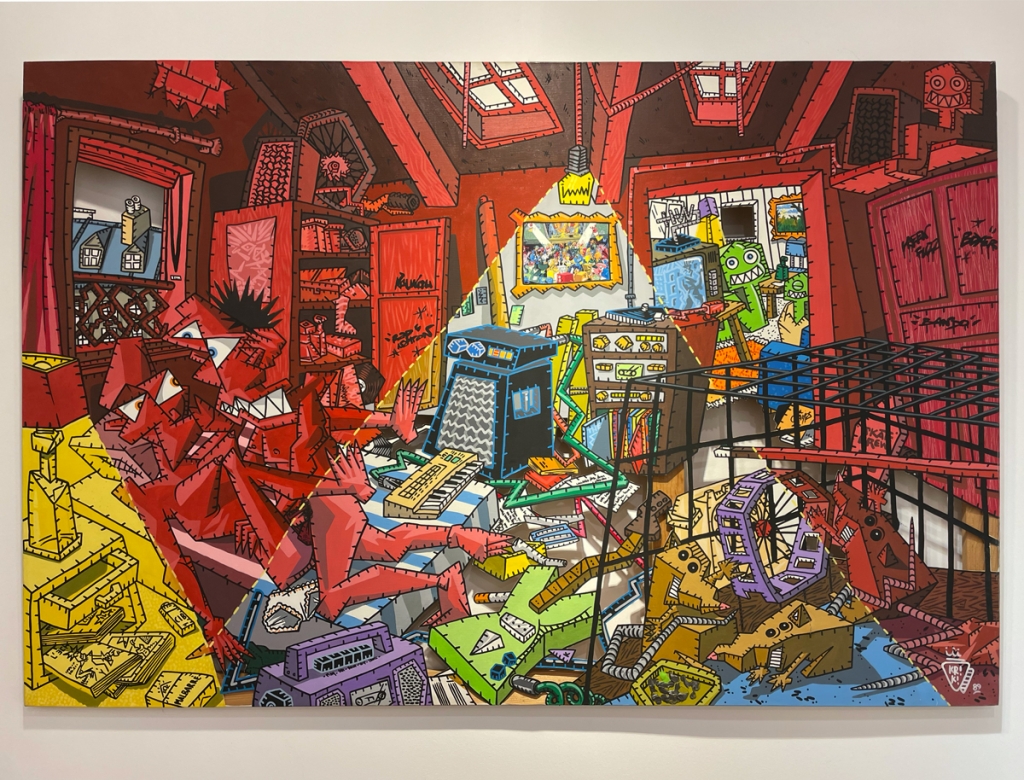
Now more than ever, Kriki’s work reveals worlds constructed by multiple cultural references made from the sedimentation of affects that punctuate his life as an artist. Indeed, Kriki mixes his worlds, not hesitating inside complex architectures to interconnect African masquerade characters with pompadours wearing sneakers, as well as breaker dancers with domestic robots. All of his figures draw their identities from African rites, but also from western classical art, Hip Hop culture, as well as robotics, notably with the android Topo, home automation guard. As a result, this over- manipulation of original images from which his paintings provokes a certain resistance to our first attempt of understanding. Ernest Van Buyender, president of the Museum of Contemporary Art in Antwerp (Muhka), will write “Kriki is the only French artist whose originality and ambition of his painting can be understood as a bridge between Subculture and High culture”. Kriki’s painting is that of hyper-connectivity with jacks and other connection cables which, like so many energy flows, network his visionary worlds where his own aesthetic language meets an universal language.
Who is Fuzz ?
Meet with Kriki in his studio to discover the true story of Fuzz.


